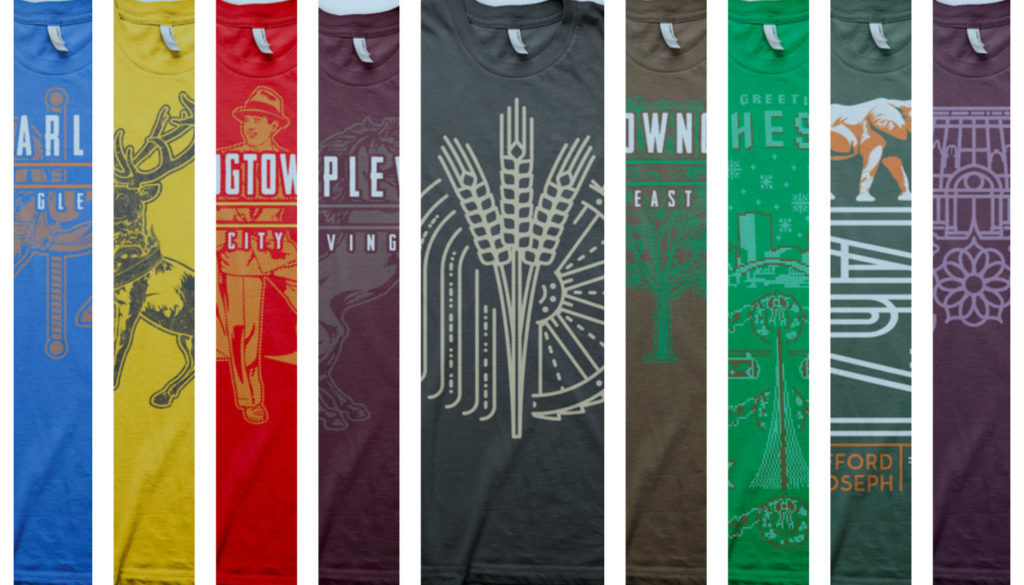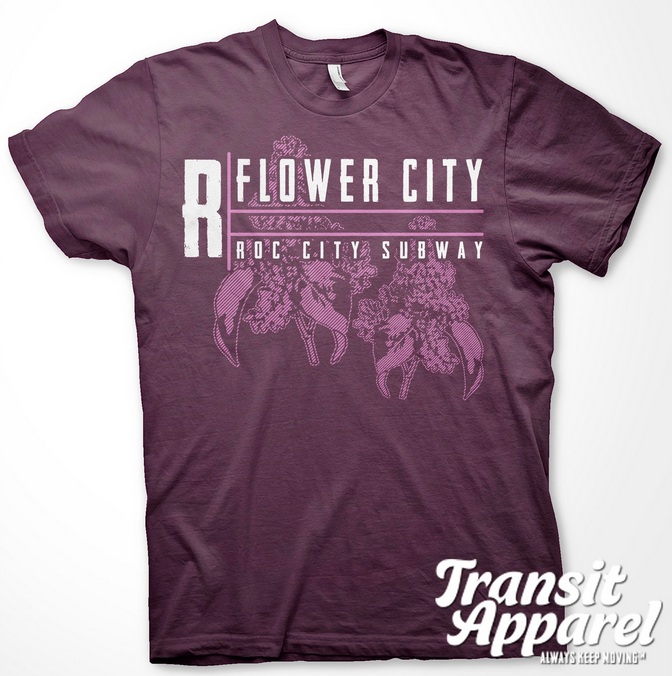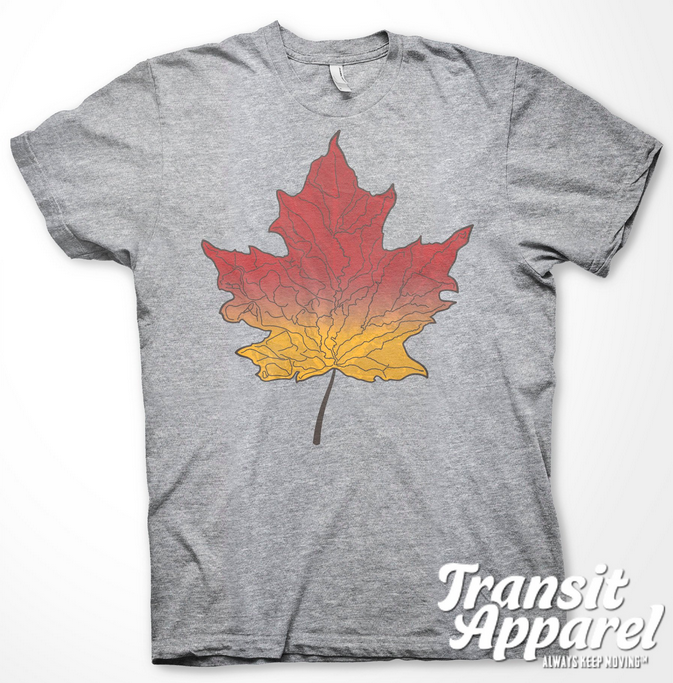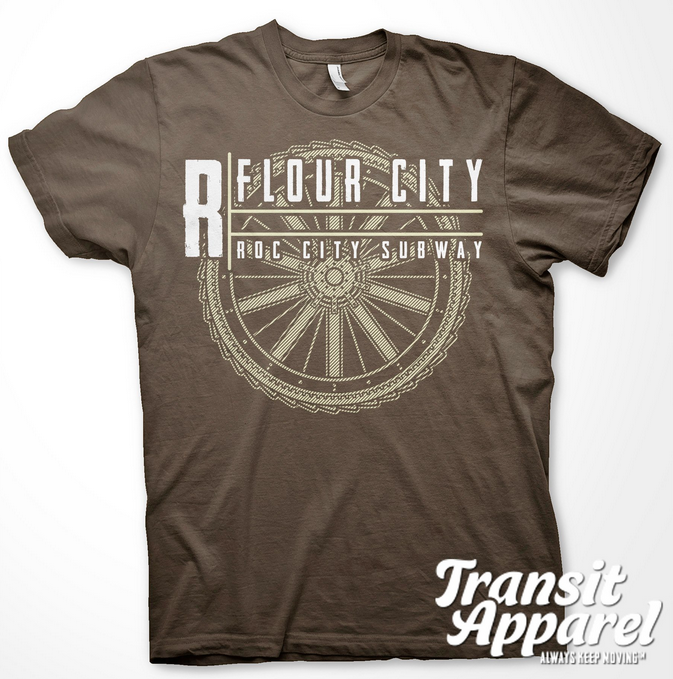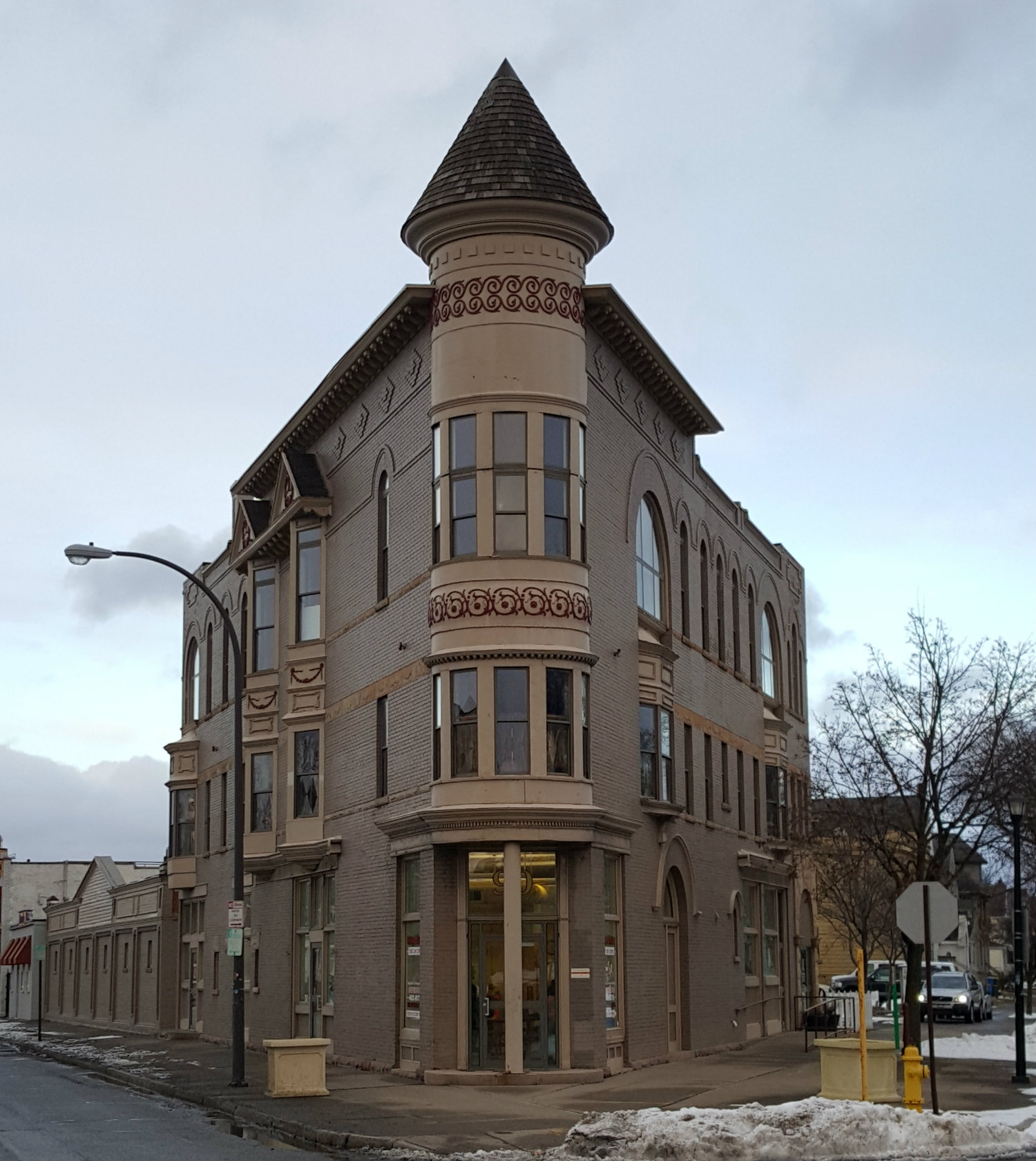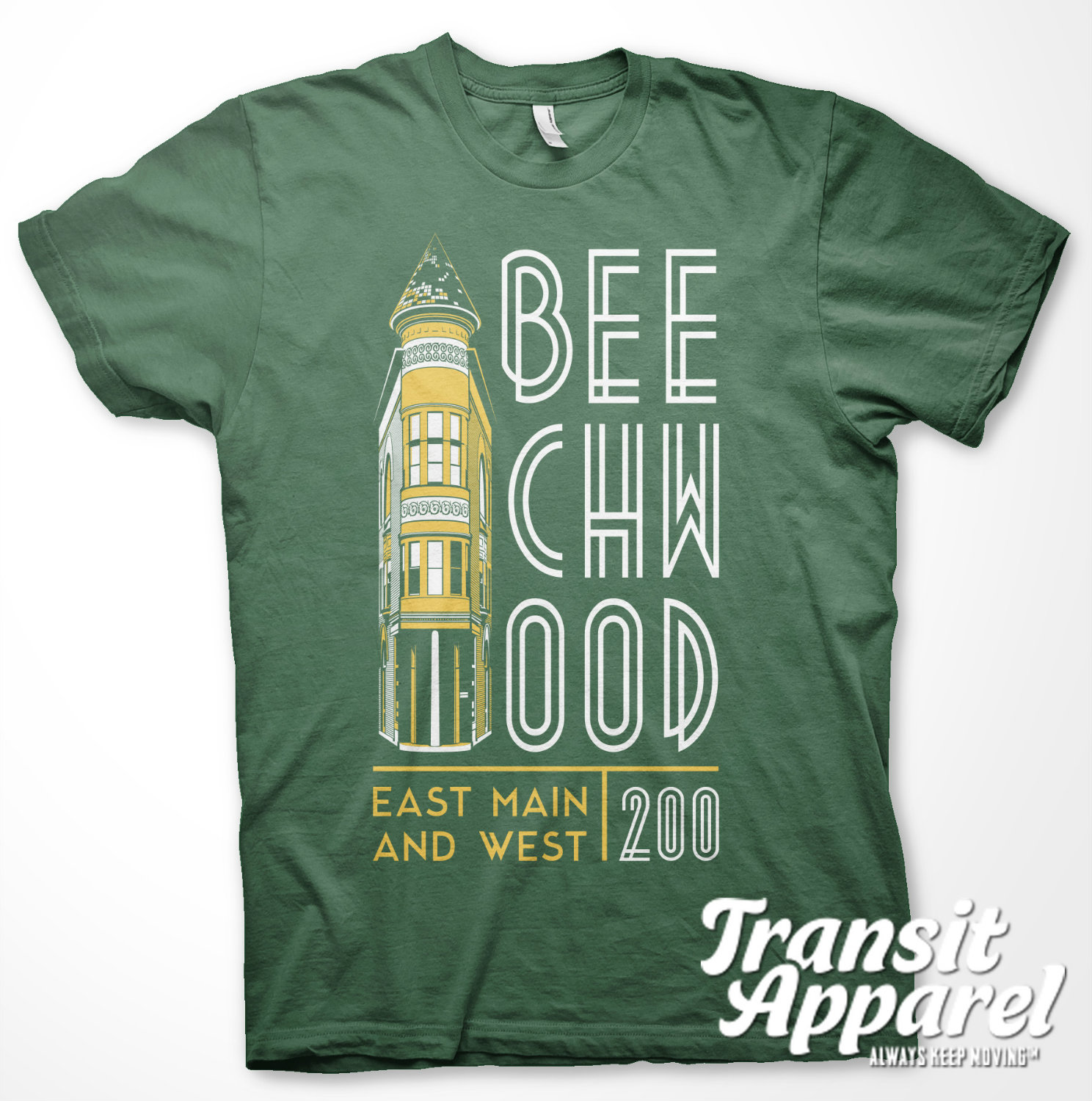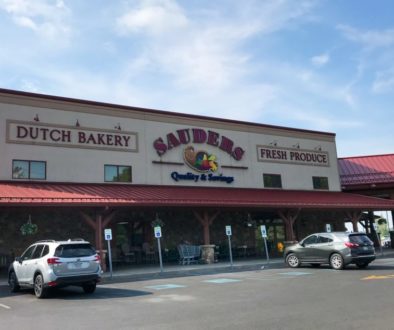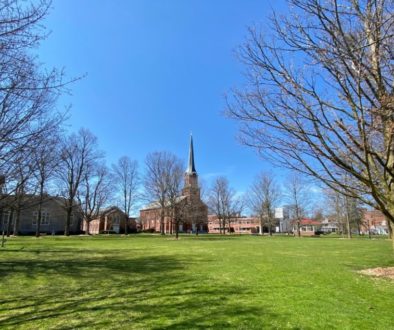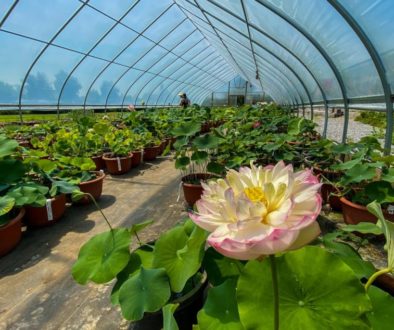5 Years of Rochester T-Shirts with Transit Apparel
by Chris Clemens
When I first discovered Transit Apparel, I was immediately intrigued by the theme of the Rochester t-shirt company. This year, the all-local business owned by Matt Rogers is celebrating five years. During that time, I’ve managed to collect a couple Transit Apparel t-shirts that I love. Since he’s also a fan of local history, he and I end up crossing paths regularly so we’ve become pals.
To help send Transit Apparel into a sixth year, I thought I’d take a moment this week to celebrate the company’s anniversary. I know Matt’s Rochester t-shirts have themes like neighborhoods and local folklore, but I wanted to learn more. So, I asked him about everything!
Rochester’s Neighborhoods on a T-Shirt
Matt was born and raised here in Rochester, New York. Like me, he was born at Genesee Hospital, which is now long gone. But, also like me, he has a fascination for local history and a penchant for learning about our region. Totally not like me at all, he has a keen eye for graphic design.
As you’ll learn further down in this post, his graphic design talent was combined with his interest in local history. Matt came up with the idea of using t-shirts to tell the story of Rochester’s past.
The entire line has over 40 designs featuring Rochester iconography. The Charlotte t-shirt features a carousel horse, and the Flour City shirt features the triphammer forge wheel from High Falls. Then, a Flower City shirt features the Lilac, our city’s official flower. One of my favorites from his third series is an autumn leaf, with the leaf veins being made up of actual Finger Lakes hiking trails.
Here’s what he had to say about his design process and how he got started. I also got him to weigh in on where Upstate New York really is!
When did you first get interested in local lore and stories? Was there a particular story that got you hooked?
It’s hard to pinpoint a specific example, I’ve been interested in history and exploring all my life, and have been extremely lucky to make a living as an artist. I’ve always enjoyed creating art, and originally wanted to keep it as a personal passion and not a career. My fear was if I ended up being a working artist and hated my job, I would hate what I was good at.
I had started college with a focus in Zoology, aiming to work with big cats for either a research group or publication like National Geographic. I had even interned at Seneca Park Zoo and loved it. Some of the courses that focused on microbiology didn’t love me, and with having other priorities besides going to class, I failed out of college. After some serious adulting, I realized I had to rely on what I was good at for a career, so I spent a year refocusing my efforts at Monroe Community College. Getting back on my mental feet, I returned to school, worked my ass off, and graduated in a combined four years.
When did Transit Apparel start? And, how’d you get the idea to make t-shirts representing neighborhoods?
The spark that would become Transit Apparel had been kicking around in my head since 2011. I was working in sports apparel product development and felt restless. At that time, I lived in Upper Monroe, experiencing the neighborhood and city as a resident. The diversity and history of the different neighborhoods was fascinating to me. I wanted to celebrate those unique identities in a meaningful way. Conversations with friends about NYC or Boston, and how historic and interesting the neighborhoods and public transit was kept happening. I would think to myself, “Rochester has a history and neighborhoods–we even had a subway!”
I also wanted to connect the neighborhoods in a unique way, and with my personal affection for trolleys and subways, used our historical subway system as the thread. This concept would form the current Series One, which features city neighborhoods connected by Subway stops.
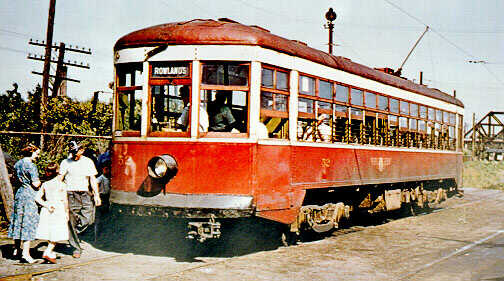
At the time, not a lot of people were celebrating our history with creative endeavors, so I figured I’d start with something a little more generic. The first three shirts I designed were The Flour City, The Flower City, and Young Lion Of The West, intended as an introduction to Series One in style and format (it even includes the line “Roc City Subway”). Those early designs seemed to strike a chord with people, and allowed me to grow into what I do today.
When you’re designing a t-shirt like Series One, how do you determine the icon that goes with the neighborhood’s heritage? Is it ever difficult to choose?
Every shirt tells a story: the color of the shirt, color of the graphic, and main graphic all mean something to the theme. Some neighborhoods are a little more straight forward than others. Areas like Center City and Neighborhood Of The Arts have a strong variety of imagery to pull from, where as places like Lincoln Park and North Edge are a little more challenging.
Sometimes I get stuck between two very strong directions and it’s tough to choose. Other times I’m lucky if I can get just one direction. I have re-created graphics in the past if I don’t think the design is working. As an example, the Pearl-Meigs-Monroe shirt graphic is not the one I started with. I re-drew it for a better composition.
Generally, I work to create the best illustration I can think of at the time, that is interesting enough to garner questions and maybe even a conversation as to what it means and why it’s there. Hopefully this leads to an interest in and benefit to whichever neighborhood, city nickname, or theme the shirt is featuring. That’s the goal.
How do you continue to keep the design process fresh for yourself?
It is challenging, as once I establish a series theme, I commit to the same style for each design of that theme. Sometimes the theme are five designs, sometimes there’s 36 designs. I do work to change up the colors, but the graphic style and typefaces are all consistent.
One method I just recently employed was revisiting themes I’ve created shirts for previously and re-imagining them. I recently designed new versions for Flour City, Flower City, and YLOTW shirts. The new design has a different style that still celebrates those nicknames, but in a more subtle way. The response and feedback have been phenomenal.
I am also deeply grateful to be able to revisit older themes I’ve already designed for as a milestone. It’s only possible because of people who have supported Transit Apparel all these years.
Is there a design element that you always work to incorporate into each shirt? (hidden items, easy to read, etc)
With series themes I generally keep to one style for consistency of the theme. For example, all Series One (City Neighborhoods/Subway Stops) shirts follow the same format and layout, as does Series Five (Neighborhoods/Trolley Lines). And there are details and conscious decisions that aren’t always obvious.
Some examples: the typeface in Series One is directly based on the public transit window rolls you’d see on the sides of subway cars and buses telling which line you were on, the typeface in Series Five is based on the 1920s (the golden age of public transit), all neighborhood shirts known for green space or a major park are the same color green, and all neighborhood shirts with a direct link to our Flower City nickname have the same color illustration.
A major hidden element is actually on the back of the shirt: every shirt has my logo, and the inside band of the logo matches the accent color on the front, but it changes too. Each series has a corresponding band that reflects the theme of that series, like subway cars, seasons, horse-drawn trolleys, mystical symbols, etc.
I try to include as much as I can in each finished piece, and people are starting to catch on to the story aspect. A lot of my friends and dedicated customers, people who have followed me since the beginning, saw my most recent releases (the monoline nicknames) and immediately asked if I hid anything. And if you want a little secret, I did, and it’s Morse code.
It’s been five years since you’ve started. Knowing what you know now, do you have any advice for five-years-ago-Matt?
Quit your job sooner. Around the time I started Transit, I was in a very toxic working situation with a lot of toxic people. I had recently suffered a mental episode from a combination of dread, stress, depression, and melancholy. I was detaching myself, becoming numb. During that time, I had been concepting this idea to highlight Rochester neighborhoods and after some encouragement from some trusted coworkers, friends, and the wife, I decided to move forward with creating the whole business. I learned way too late that no job is worth sacrificing your mental health.
It’s also been challenging to stay patient and invest wisely in the business. When I first started I had dozen ideas I wanted to pursue all at once like prints, vinyl collectibles, custom lego sets, mobile retail, and manufacturing custom apparel. I still have all those ideas and will get to them eventually; I’ve just kept to a more conservative path that will hopefully keep me from burning out and having to close shop. It’s a balance I guess, but I’m still growing. This year I bought my own equipment and have been printing my own designs since the beginning of the year!
I know you set up at a lot of festivals. Do people tend to buy more online? Or, in person when you’re set up at a booth?
I do the majority of my sales in person at the stop shop. Every show I do is learning experience and I try to tweak and improve all the time. Things like adding the stories behind the designs to price tags, adding signage, and finessing the retail experience have all evolved over time. A good conversation with those curious to learn is the best marketing for me.
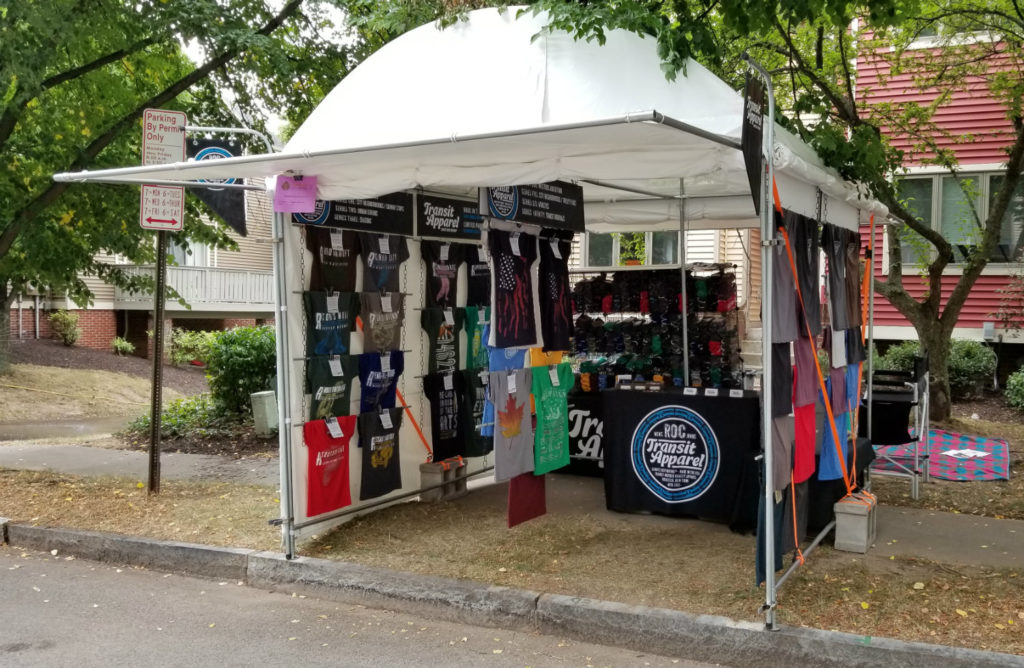
Online sales are there as a support and convenience for transplants, second thoughts, and missed chances.
What does Rochester reeallllyy, really need right now?
Like a lot of cities, Rochester needs more reasons to have people in the Center City past 5pm. A lot of the neighborhoods like South Wedge, Pearl-Meigs-Monroe, North Winton Village, Charlotte, and Park Ave have a decent amount of amenities to keep people past their work schedule. Yes, there are promising signs from the St. Paul Quarter and East End, but it needs to keep growing into other areas of downtown.
I’m hopeful for the success of recently announced plans like the ROC The Riverway initiative or whatever will end up at Parcel 5 to keep people around: we could have our very own Chicago Riverwalk or Canalside Buffalo if we play our cards right. Downtown residential development has been happening at break-neck speed. They’re bringing the chicken cart, now we need the horse to hatch.
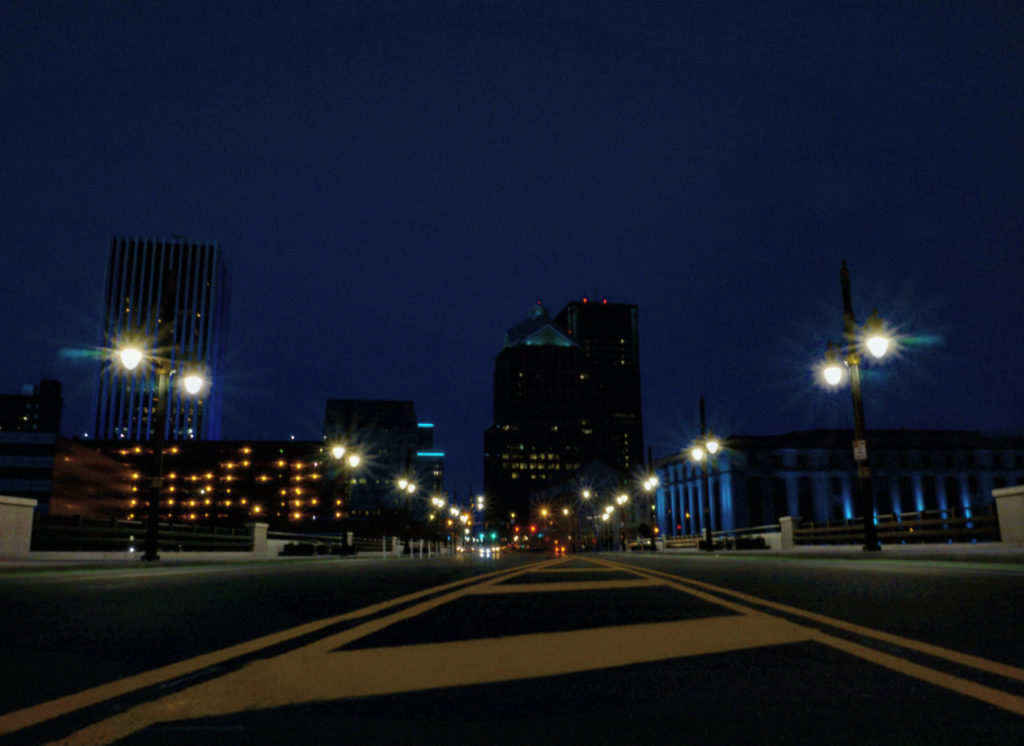
Settle this for me real quick. Where’s Upstate New York?
You had to go there… This is an irrational and very personal pet-peeve of mine that Rochester gets labeled as Upstate by the majority of NYC and Long Island residents. I understand the label is a matter of perspective, I just see that perspective lacks scope.
A while back, I was standing in line at the Ithaca Public Market overhearing a NYC couple talking about being upstate and having to wait in line. Not sure which was more charming to me, but I think it was the waiting in line part. More recently I was at a photoshoot in the Village, and the photographer was late, noting he was driving from Poughkeepsie and traveling from upstate to the city was a hassle. I mentioned being from Rochester and you’d think I’d said Montreal.
What’s coming up for Transit Apparel? New designs you can give us a sneak peek of? Non-t-shirt items? Tell us everything!
More shirts! I’m currently working to fill out as many of the neighborhoods as I can in Series One and Five, as well as growing my newer series: Urban Legends. I created a design for a lesser known area of Rochester that is supposedly cursed, and people have been enchanted with the story behind it. Next on my list of legends is a more familiar one and I’m grinding away trying to finish it before releasing her out into the mist. I’m hoping to have three urban legends to share in the collection by the end of the year.
Beyond that it’s always the search for new and interesting ways to share what I’ve learned: looking to spread out a bit from shirts and include a few print pieces, as well as a potential serial set with either a vlog or podcast to digitally highlight our history, culture, and pride.
I’m also looking at other cities. The resurrected interest in city life has been almost international, and I’d love to apply my series concepts to new and different areas beyond Rochester. There have been some barriers though, and not where you might expect. I operate almost exclusively through art shows and festivals, but some city events are extremely restrictive on apparel for their jurying process, and all but keep me out of even considering applying for a show. It’s not a total ban and there are other options, but it’s definitely a downer and makes me not too keen to expand to that city.
For now though, I’ll always keep moving.
To see all of the shirts available from Transit Apparel you can visit the website, and follow along on Instagram, Facebook and Twitter.
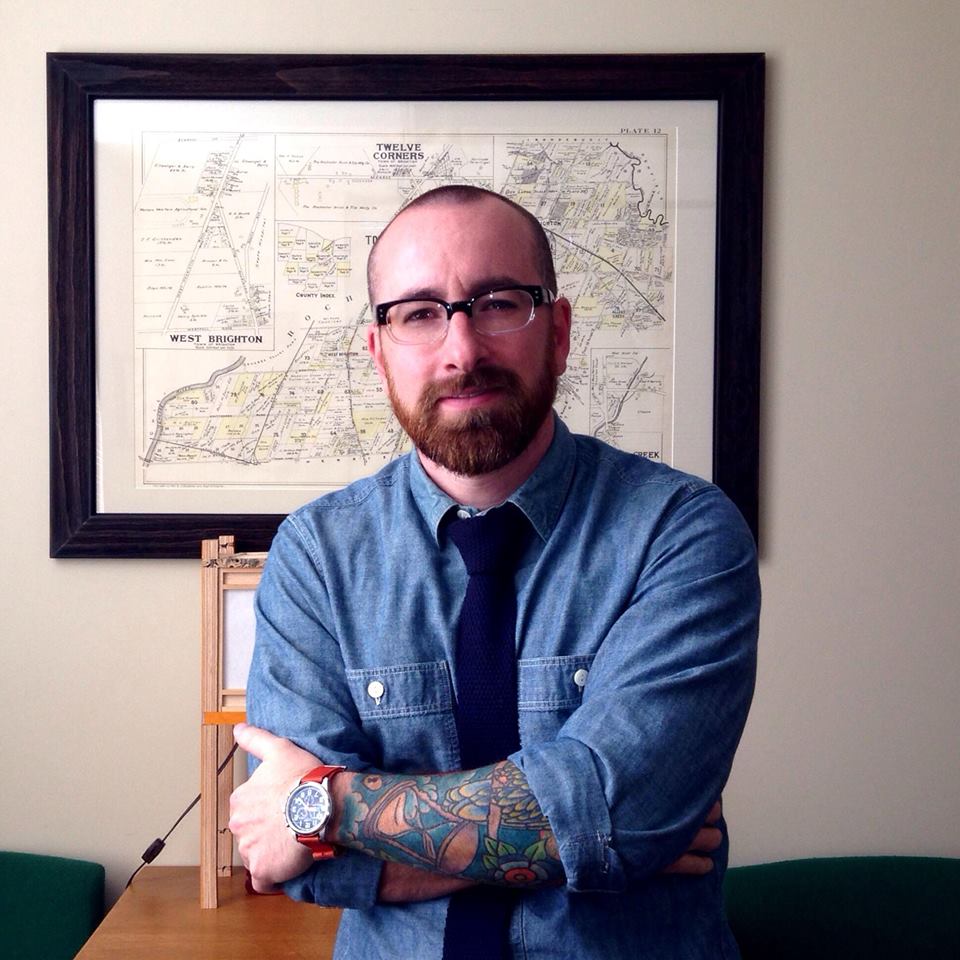
Chris Clemens is the Founder/Publisher of Exploring Upstate. From his hometown in Rochester, he spends as much time as possible connecting with the history, culture, and places that make Upstate New York a land of discovery. Follow him on Twitter at @cpclemens

